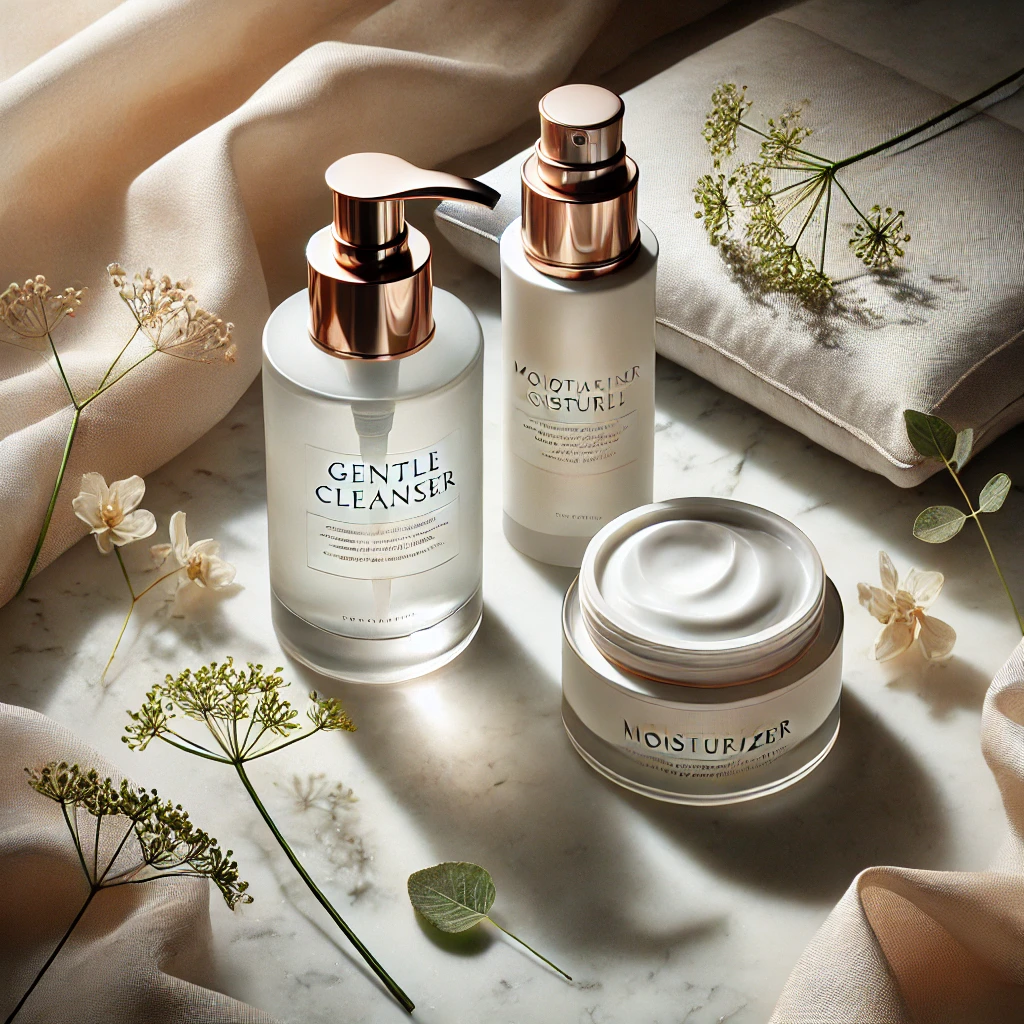The Only Three Essential Skincare Products You Need for Timeless Beauty
Why Simplicity Is the Secret to Radiant Skin
With beauty aisles overflowing and trends shifting like the tides, it is all too easy to believe that a flawless complexion demands an elaborate regimen. Yet, the true secret to timeless beauty is not excess but elegance—a carefully curated routine built upon the three essential skincare products that every woman needs.
By embracing simplicity, you ensure your skin receives precisely what it requires—no more, no less. These essential skincare products are the foundation of any effective routine, offering everything your skin needs to thrive.
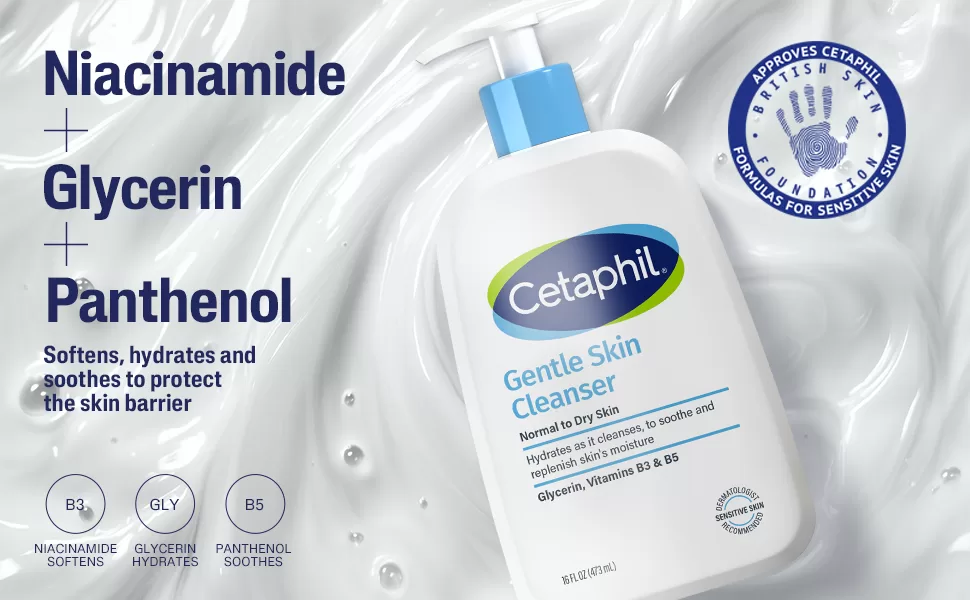
The Gentle Cleanser—The First of Your Core Skincare Essentials
Ah, the cleanser! A whisper of freshness upon your skin, the first act in your daily beauty symphony. To cleanse is to begin anew—to sweep away the dust of the world, to reveal the canvas upon which beauty is born.
Choose your cleanser wisely, for it must caress, not strip. Seek one befitting your skin’s nature:
- For delicate, parched skin—a milk or balm, imbued with nourishing oils.
- For the lively, exuberant youth of oilier complexions—a foaming wash, light and airy.
- For the temperamental, sensitive soul—a fragrance-free, soothing gel.
This is one of the three essential skincare products that will set the tone for your entire routine.
- Hydration is Key: In the dance of oil and water, balance is the secret. When skin is deprived of moisture, it rebels by producing more oil. Embrace a lightweight moisturizer, one that cradles your skin with humectants like botanical hyaluronic acid. This will offer the hydration your skin craves, keeping excess oil at bay.
- The Paradox of Oil Cleansing: It may sound counterintuitive, yet an oil cleanser is your ally. Imagine the oil as a magnet, drawing out excess sebum, lifting it away in a cleansing wave that respects your skin’s natural harmony.
- A Routine Refined: Embrace this symphony of care, where each note—cleansing, hydrating, balancing—is played with purpose. Let your skin shine with youthful exuberance, not excess oil.
- For the temperamental, sensitive soul—a fragrance-free, soothing gel. Sensitive skin is more common than you might think, affecting about 50% of people, according to dermatological studies. It features fine pores and can easily become irritated, often showing signs of redness. This skin type is sensitive to various triggers, such as lifestyle habits, climate changes, hormonal shifts, and harsh cosmetic ingredients. Its symptoms don’t appear the same for everyone, varying in severity and frequency. To care for sensitive skin, opt for products that are gentle and soothing. Look for calming, natural ingredients like chamomile and calendula to comfort reactive skin. Gentle peels can be an effective way to exfoliate without increasing sensitivity. Remember, the goal is to heal and relieve, not to irritate further.
Always, always cleanse with reverence. Lukewarm water, a gentle touch, and the soft embrace of a fresh towel will ensure your skin is left invigorated, not distressed.

Customizing Your Skincare Routine with Essential Products
When it comes to skincare, customizing your routine to fit your unique skin type is essential for effective results. Let’s explore how to tailor skincare routines to different skin types for optimal health and appearance.
Understanding Skin Types
Your skin type is dictated by genetics, influencing oil production, pore size, and overall texture. While you can’t change your skin type, you can manage it with the right essential skincare products and routine.
Building a Custom Routine
Sensitive Skin: Choose gentle, soothing essential skincare products to calm and protect.When it comes to skincare, customizing your routine to fit your unique skin type is essential for effective results. Let’s explore how to tailor skincare routines to different skin types for optimal health and appearance.
Normal Skin: Focus on maintenance with antioxidant-rich essential skincare products to protect and nourish.
Dry Skin: Prioritize hydrating essential skincare products, such as cream cleansers and rich moisturizers.
Oily Skin: Aim to balance oil production while maintaining hydration with lightweight essential skincare products.
Combination Skin: Employ a dual-method approach with essential skincare products suited for different areas.
Understanding Skin Types
Your skin type is dictated by genetics, influencing oil production, pore size, and overall texture. While you can’t change your skin type, you can manage it with the right products and routine. Typically, skin types include:
- Normal Skin: Balanced and healthy, but may face occasional dryness or oiliness.
- Dry Skin: Lacks necessary moisture, often feels tight, and prone to flakiness.
- Oily Skin: Produces excess sebum, leading to shine and potential breakouts.
- Combination Skin: A mix of oily and dry areas, often oily in the T-zone.
- Sensitive Skin: Prone to irritation and responds to environmental changes.
Building a Custom Routine
For Normal Skin:
- Focus on maintenance with antioxidant-rich products to protect and nourish.
- Flexibility is key; adjust for occasional dryness or oiliness by choosing appropriate products.
Dry Skin Care:
- Prioritize hydrating products, such as cream cleansers and rich moisturizers, to replenish moisture.
- Use weekly hydrating masks to plump and soften the skin.
Oily Skin Care:
- Aim to balance oil production while maintaining hydration.
- Lightweight, hydrating moisturizers with ingredients like hyaluronic acid help control oil.
- Consider using oil-based cleansers to gently remove excess sebum.
Combination Skin Care:
- Employ a dual-method approach for different areas: foaming cleansers for oily spots, cream cleansers for dry areas.
- Use multi-masking techniques to address varying concerns on different face parts.
Sensitive Skin Care:
- Gentle, soothing products are essential to calm and protect the skin.
- Choose products with soothing ingredients like chamomile and calendula to reduce irritation.
Additional Tips
- Patch Test: Always test a new product on a small skin area to prevent adverse reactions.
- Seasonal Adjustments: Change your routine to address weather conditions—lighter in summer, richer in winter.
- Lifestyle Considerations: Diet, stress, and sleep patterns can affect skin health; maintain a balanced lifestyle for the best results.
This personalized approach ensures that your skincare routine supports your unique needs, keeping your skin looking and feeling its best.
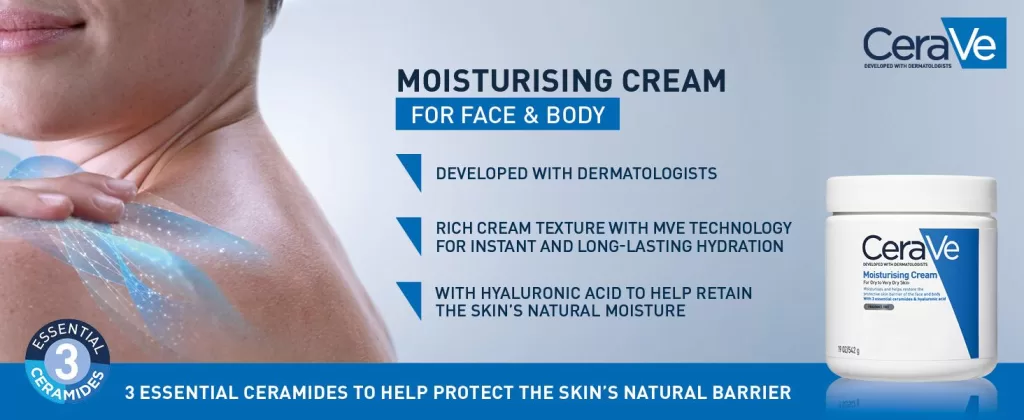
What Factors Contribute to Dull Skin, and How Can It Be Revitalized?
Dull skin often lacks the vibrant radiance that symbolizes healthy skin. It can appear fatigued, uneven, and devoid of its natural glow. But what leads to this lackluster appearance?
Contributing Factors to Dull Skin
- Environmental Stressors: Sun exposure and pollution can strip the skin of its vitality.
- Lifestyle Choices: An unbalanced diet and lack of exercise can make the skin appear worn and tired.
- Seasonal Changes: Shifts in temperature and humidity can affect skin texture and appearance.
- Dead Skin Cells: Accumulated dead cells can obstruct the reflection of light, diminishing the skin’s luminosity.
Revitalizing Solutions
To reclaim your skin’s natural glow, consider the following strategies:
- Nutritious Diet: Embrace foods rich in vitamins and antioxidants. These nutrients nourish the skin from within, boosting its radiance.
- Antioxidant-rich Skincare: Incorporate products that contain antioxidants, such as vitamin C serums, to protect and enhance your complexion.
- Exfoliation: Regularly exfoliate to remove dead skin cells, revealing fresher, brighter skin. Aim for gentle exfoliants that won’t irritate.
- Hydration: Use moisturizers with humectants like hyaluronic acid to maintain hydration, ensuring a soft, supple appearance.
By addressing these factors with targeted approaches, you can revive dull skin, restoring its natural, youthful glow.
Understanding Dry Skin: Characteristics and Care Tips
Dry skin is characterized by noticeably low oil production, which makes it challenging to retain the moisture necessary for maintaining smooth and flexible skin. Individuals with this skin type often experience a sensation of tightness and dryness, with occasional flakiness particularly evident on the cheeks, chin, and forehead. Additionally, pores tend to be less visible, but this can accentuate fine lines, especially around the eyes and lips.
Key Features of Dry Skin:
- Low Oil Production: This leads to a lack of essential lipids.
- Tightness and Flakiness: Common sensations and signs on different facial regions.
- Fine Lines and Pores: More pronounced fine lines and nearly invisible pores in some areas.

Recommended Care for Dry Skin:
- Moisturizing Cleansers:
- Opt for creamy or oil-based cleansers that nourish as they clean, such as those from brands like Cetaphil or CeraVe.
- Daily Moisturizers:
- Use hydrating moisturizers throughout the day. Look for products containing hyaluronic acid or glycerin.
- Night Creams:
- Choose a rich cream for nighttime that supports the skin’s repair process during sleep.
- Weekly Masks:
- Consider using moisturizing masks weekly to enhance hydration and minimize the visibility of fine lines.
These practices can significantly improve skin hydration, leaving your complexion healthier and more comfortable.
Understanding Normal Skin and Its Care
Characteristics of Normal Skin
Normal skin is often recognized for its well-balanced nature. It typically showcases:
- Even moisture and hydration levels.
- Uniform texture.
- Small, less visible pores.
While normal skin generally maintains a healthy appearance, it isn’t exempt from occasional challenges. Some fluctuations include brief periods of dryness or oiliness, and the rare breakout, often linked to environmental factors.
Caring for Normal Skin
Maintaining the health of normal skin involves a balanced skincare routine. Here’s what you should focus on:
- Antioxidant Protection: Incorporate products rich in antioxidants to defend against environmental stressors. Look for ingredients like vitamin C and green tea extracts.
- Adaptation to Skin’s Needs: Adjust your skincare to address specific conditions.
- During Dry Spells: Use hydrating products tailored for dry skin, such as those containing hyaluronic acid or ceramides.
- When Oily: Opt for lightweight, non-comedogenic products that help control oil and prevent blemishes. Look for ingredients like salicylic acid or niacinamide.
- Sun Protection: Regular use of a broad-spectrum sunscreen is crucial, even when indoors.
By following these guidelines, normal skin can continue to look and feel its best while adapting smoothly to any temporary changes.
Understanding Skin Concerns vs. Skin Types
When discussing skincare, it’s crucial to differentiate between skin concerns and skin types.
**1. Genetic vs. Environmental Factors
- Skin Type is primarily determined by genetics. You might naturally have oily, dry, combination, or normal skin, depending on your hereditary makeup. These characteristics are usually stable over time.
- Skin Concerns and Conditions, on the other hand, are issues that develop due to external influences such as weather changes, lifestyle factors, or environmental stress. This includes problems like acne, hyperpigmentation, or sensitivity, which aren’t inherent but can evolve and change over time.
**2. Permanence vs. Change
- A person’s skin type tends to remain consistent, although it can fluctuate slightly with hormonal changes or age.
- In contrast, skin concerns can often be temporary and improve or worsen due to external factors and proactive treatment. For example, using products with active ingredients, like retinoids or hyaluronic acid, can significantly alleviate these issues.
**3. Treatment and Management
- Since skin types are innate, the focus is on maintenance through tailored routines that cater to moisture balance and protection.
- Addressing skin concerns often requires targeted solutions, such as serums with niacinamide for redness or salicylic acid for breakouts.
**4. Understanding the Difference
Grasping the distinction between skin concern and type is vital for effective treatment. While you can’t change your skin type, you can take actionable steps to address and improve skin concerns, adapting as necessary to suit the current condition of your skin.

Discover Your Skin Type
Figuring out your skin type can transform your skincare routine and help you choose products that truly work for you. Here’s a step-by-step guide to accurately identify whether your skin is normal, dry, oily, combination, or sensitive.
Step-by-Step Skin Type Identification
- Cleanse Your Face: Start by washing your face with a gentle cleanser to remove all makeup, dirt, and oil. Pat your skin dry with a soft towel.
- Wait and Observe: Give your skin time to return to its natural state. After cleansing, wait about an hour without applying any products. This allows your skin’s behavior to reveal its inherent characteristics.
- Assess the T-Zone:
- Normal Skin: Feels comfortable, neither too oily nor too dry.
- Dry Skin: Might feel tight, especially around the cheeks.
- Oily Skin: Noticeable shine, likely in the T-zone (forehead, nose, chin).
- Combination Skin: Oily in the T-zone, but dry or normal on the cheeks.
- Sensitive Skin: May appear red, itchy, or react easily to environmental factors.
- The Blotting Sheet Test:
- Press blotting paper against different areas of your face.
- Visible oil: Indicates oily skin.
- Little to no oil: Points to dry skin.
- Oil in some areas: Suggests combination skin.
- Examine Pore Size:
- Large Pores: Often associated with oily skin.
- Small and Tight Pores: Tend to be found on dry or normal skin.
Common Skin Types
- Normal: Balanced, blemish-free, with even texture.
- Dry: Flaky, rough, potentially prone to irritation.
- Oily: Prone to shine, visible pores, and breakouts.
- Combination: Mixture of oily T-zone with dryer areas.
- Sensitive: Tends to react with redness, itching, or burning.
Tips for Each Skin Type
- Normal: Maintain balance with gentle cleansers and light moisturizers.
- Dry: Opt for rich, hydrating products and avoid alcohol-based toners.
- Oily: Use oil-free, mattifying formulas and exfoliate regularly.
- Combination: Customize your routine, using products suited for different areas.
- Sensitive: Choose fragrance-free, hypoallergenic skincare options.
By following these steps, you’ll gain a clearer understanding of your skin type and can tailor your skincare regimen accordingly. This knowledge empowers you to make informed choices, ensuring your skin looks and feels its best every day.
Understanding Skin Types: A Comprehensive Guide
When it comes to caring for your skin, knowing your skin type is invaluable. But what exactly determines these types, and how can you identify yours?
Genetic Factors Behind Skin Types
Your skin type is primarily dictated by your genetics. It all starts with how much oil your sebaceous glands produce, which affects moisture and texture. This combination of factors helps define whether your skin tends towards being oily, dry, or somewhere in between. While you can’t change your genetic blueprint, you can manage your skin’s characteristics with the right care.
The Five Main Skin Types
Skin types are commonly classified into five distinct categories, each with its unique traits:
- Normal Skin: This type is well-balanced—neither too oily nor too dry. It often features a smooth texture and minimal imperfections, making it relatively easy to care for.
- Dry Skin: Characterized by low sebum production, dry skin can feel tight or rough and may be prone to flaking. It often requires extra hydration and gentle care.
- Oily Skin: With heightened oil production, oily skin might appear shiny and is more susceptible to acne. Regular cleansing and oil-free products can help manage this type.
- Combination Skin: A bit of each, combination skin typically has an oily T-zone (forehead, nose, and chin) while remaining areas may be dry or normal. Balancing products are essential here.
- Sensitive Skin: Often reactive and prone to redness or irritation, sensitive skin demands mild, soothing products to prevent flare-ups.
Managing Your Skin Type
While skin type is a genetic constant, personalized skincare routines can significantly enhance your skin’s health and appearance. Start by identifying your skin type, then tailor your approach with products and practices suited to its needs. Whether it’s adding moisture to dry areas or controlling shine on oily zones, a targeted routine will help you maintain a glowing complexion.

How Often Should You Exfoliate and What Types Are Available?
Frequency of Exfoliation:
Exfoliation is a key step in maintaining radiant and healthy skin. Generally, it’s advisable to exfoliate once or twice a week. This frequency helps promote fresh skin cell turnover, clears away accumulated debris, and unclogs pores. However, your skin type and specific concerns may require adjustments in the frequency. Always consider your skin’s unique needs.
Types of Exfoliants Available:
- Chemical Exfoliants:
- These include alpha hydroxy acids (AHAs) and beta hydroxy acids (BHAs), which dissolve dead cells and encourage renewal.
- Ideal for those seeking an even skin tone and texture.
- Enzymatic Exfoliants:
- Made from natural enzymes found in fruits like papaya and pineapple.
- A gentle option that can suit sensitive skin types.
- Physical Exfoliants:
- Contain small granules or beads to manually slough away dead skin.
- Best for those who prefer a more hands-on approach to exfoliation.
- Professional Treatments:
- Include potent peels and treatments tailored by skincare professionals.
- These should be undertaken if you’re looking for more intensive care.
It’s beneficial to consult a skincare expert or dermatologist to determine the best exfoliation strategy for your specific skin needs, ensuring optimal results without irritation.
The Moisturizer—A Vital Skincare Staple for Hydration
After the purity of cleansing, the skin must be nurtured—cherished as one would a delicate silk gown. A moisturizer is not merely a cream but a promise of supple, luminous beauty.
Consider:
- A delicate lotion for skin prone to excess radiance—so light it vanishes upon touch.
- A sumptuous, velvety cream for those with parched, winter-worn skin—rich with humectants to drink in the air’s dew.
- A perfectly balanced emulsion for those who waver between the two—bestowing equilibrium upon the complexion.
This is the second of the three essential skincare products, ensuring your skin remains hydrated and resilient.
Understanding and Treating Dehydrated Skin
Dehydrated skin occurs when your skin lacks adequate water, leading to several noticeable symptoms. These can manifest as itchiness, heightened sensitivity, and a lackluster appearance. You might also notice fine lines and wrinkles becoming more apparent. It’s important to note that even those with oily skin can experience dehydration.
Common Causes
Dehydration can stem from various factors, including:
- Harsh environmental elements like wind or cold weather
- Unbalanced diet lacking in essential nutrients
- Poor lifestyle habits, such as inadequate fluid intake or excessive caffeine consumption
Effective Remedies
To combat dehydrated skin, incorporating products with hydrating ingredients can make a significant difference. One star ingredient to look out for is hyaluronic acid. Here’s why it stands out:
- Exceptional Moisture Retention: Hyaluronic acid can attract and hold large amounts of water—up to a thousand times its weight—acting as a powerful humectant.
- Enhanced Skin Appearance: By drawing moisture from the air into your skin, it helps maintain a plump, smooth, and radiant complexion.
Actionable Steps
- Skin Care Routine Overhaul:
- Integrate products containing hyaluronic acid, such as serums and moisturizers.
- Opt for gentle cleansers that don’t strip away natural oils.
- Lifestyle Adjustments:
- Increase water intake to hydrate from within.
- Incorporate foods rich in omega-3 fatty acids, like nuts and fish, to support skin hydration.
- Environment Control:
- Use a humidifier during dry seasons to maintain ambient moisture.
- Protect your skin against harsh weather conditions with appropriate clothing and skincare barriers.
By addressing both skincare and lifestyle aspects, you can effectively manage dehydration and restore your skin’s natural radiance.

Addressing Lack of Firmness in the Skin
The challenge of reduced skin firmness often comes hand in hand with aging. As time progresses, the body’s muscle tone and elasticity naturally diminish, which can leave your skin sagging and less resilient.
Here’s how you can tackle the loss of firmness:
- Revamp Your Skincare Routine: Incorporate products that specifically aim to enhance skin tightness and elasticity. Opt for moisturizers and masks with natural firming ingredients, such as bamboo extract or marine collagen, to support skin structure.
- Nourish from Within: Diet and hydration are key. Ensure your nutrition includes plenty of antioxidants and healthy fats, which support skin health. Ingredients like vitamin C and omega-3 fatty acids can be particularly beneficial in maintaining firmness.
- Facial Exercises and Massage: Regularly practicing facial exercises can improve muscle tone. Additionally, integrating facial massage techniques into your skincare regimen can stimulate circulation and keep the muscles beneath your skin robust and firm.
- Advanced Treatments: Consider professional treatments like microdermabrasion or laser therapy to boost collagen production and tighten the skin. Consulting with a dermatologist can guide you towards the right option for your needs.
By incorporating these strategies, you can actively combat the loss of firmness and help your skin retain its youthful bounce and vitality.
Understanding Combination Skin
Combination skin is a unique type of skin where oil production varies across different areas of the face. It’s a balance of contrasts: some areas, like the forehead, nose, and chin (often referred to as the T-zone), tend to be oilier due to more active oil glands. Meanwhile, other parts such as the cheeks and jawline may veer towards dryness, with less oil production.
Effective Treatment Strategies for Combination Skin
Customizing Your Routine
To effectively care for combination skin, adopting a targeted approach is key. Think of it as customized care for each section of your face.
- Morning Routine:
- Cleanser: Start your day with a gentle foaming cleanser. This helps absorb excess oil without stripping moisture from drier areas.
- Toning: Use a balancing toner to even out your skin’s texture.
- Moisturizer: Opt for an oil-free moisturizer on the T-zone and a slightly richer formula for drier areas.
- Evening Routine:
- Cleanser: Choose a cream-based cleanser to soothe and hydrate the drier parts while still cleansing the entire face.
- Serum: Use a lightweight serum that hydrates without clogging pores.
- Night Cream: Apply a nourishing cream to dry areas to replenish lost moisture overnight.
Multi-Masking Technique
Multi-masking is another effective treatment method for combination skin. This involves applying different masks to targeted areas based on their needs. Here’s how it works:
- Clay-Based Mask: Use on the T-zone to control oil and minimize pores.
- Hydrating Mask: Apply on drier areas like the cheeks and jawline for added moisture.
By customizing products to fit the needs of different facial areas, combination skin can be managed effectively, reducing oiliness while preventing dryness. This tailored strategy ensures that each part of your face receives the specific care it requires.

The Sunscreen—Your Ultimate Defense Among Skincare Must-Haves
There is no greater folly than to believe the sun is always benevolent. It kisses, yes, but it also steals—steals the suppleness, the freshness, the bloom of youth. And so, we must guard ourselves.
A broad-spectrum sunscreen is the final, most precious step in the trinity of beauty. Without it, all efforts are in vain, for the sun’s rays are tireless in their pursuit of damage.
Seek:
- A sheer, gossamer-light veil for daily use, effortless and unseen.
- A more robust shield when the sun’s embrace is fierce, be it on summer shores or alpine peaks.
This is the third of the three essential skincare products, protecting your skin from the sun’s relentless effects..
Yet, prevention is only part of our tale. The sun, in its relentless pursuit, can leave skin parched and aggrieved, demanding our tender reparations. Fear not, for the remedies are at hand:
- Hydrate deeply post-sun exposure with balms and lotions that soothe and restore, quenching the skin’s thirst.
- Guard against permanent marks of the sun’s favor—those red, blotchy imprints—by keeping skin persistently nourished and protected year-round.
The wise know that beauty is a vigilant endeavor. Daily, arm yourself with SPF moisturizers or mineral powders, and let natural body sunscreens be your armor. In this perpetual dance with the sun, find balance, and preserve the essence of youth.
What Are The Primary Signs of Aging, and How Can They Be Minimized?
Aging is a natural process, but its signs are often unwelcome guests. The most common indicators include fine lines, wrinkles, and sagging skin. These changes arise primarily because, as we age, our bodies slow down the production of essential components like hyaluronic acid, collagen, and elastin. This slowdown leads to a decrease in skin volume, density, and elasticity.
The Culprits Behind Aging
Interestingly, while only about 10% of aging is due to these natural biological processes, the remaining 90% is attributed to environmental factors, particularly the damaging impact of free radicals. These unstable molecules cause oxidative stress, which accelerates the aging process by harming skin cells.
Strategies to Minimize Aging Effects
Though the passage of time can’t be reversed, there are ways to mitigate its visible effects:
- Adopt a Targeted Skincare Routine: Embrace a regimen that focuses on hydration and protection, especially for dry, aging skin. Integrating serums, oils, and concentrates enriched with botanical peptides can significantly benefit your skin.
- Incorporate Key Ingredients: Utilize products with hyaluronic acid and natural retinol alternatives to help plump and nourish the skin. These ingredients are known for their ability to enhance firmness and elasticity.
- Harness Antioxidant Power: Products rich in antioxidants provide a dual advantage. They bolster your skin’s defense against environmental stressors and free radicals, thus reducing further damage.
By thoughtfully choosing skincare products with these ingredients, it is possible to diminish the visible signs of aging, maintaining a more youthful complexion.
Understanding Hyperpigmentation: Causes and Effective Treatments
Hyperpigmentation is a prevalent skin issue, marked by dark patches, uneven skin tone, and freckles. At its core, it’s caused by an overproduction of melanin, the skin pigment responsible for color. This imbalance can stem from various sources:
- Sun Exposure: Ultraviolet (UV) rays can trigger melanin production, leading to sunspots and uneven skin tones.
- Hormonal Changes: Conditions like pregnancy or hormonal imbalances often result in changes in skin pigmentation.
- Aging: As skin ages, its ability to regulate melanin can diminish, resulting in age spots.
- Post-Inflammatory Pigmentation: Acne or skin injuries can leave behind dark spots as part of the healing process.
Effective Treatments for Hyperpigmentation
Combatting hyperpigmentation effectively requires a targeted skincare regimen. Here’s what you should look for:
- Brightening Ingredients: Incorporate serums or moisturizers with ingredients known to lighten pigmentation. These include:
- Vitamin C: Helps in reducing dark spots and promoting an even skin tone.
- Niacinamide: Known for its brightening properties and ability to reduce inflammation.
- Licorice Root Extract: Offers natural skin brightening without harsh side effects.
- Arbutin: A naturally occurring derivative of hydroquinone, effective in lightening dark spots.
- Resurfacing Agents: Ingredients that help in exfoliating and rejuvenating the skin:
- Alpha Hydroxy Acids (AHAs): These exfoliate the surface layer of the skin, promoting cell turnover.
- Beta Hydroxy Acids (BHAs): Useful for deeper exfoliation, particularly in oily or acne-prone skin types.
- Sun Protection: A good sunscreen is crucial in preventing further pigmentation issues. Look for broad-spectrum SPF to guard against both UVA and UVB rays.
- Consistent Routine: Dedication to a consistent skincare routine is essential. Regular use of the right products can significantly improve the appearance of hyperpigmentation over time.
In summary, while hyperpigmentation can be challenging to manage, understanding its causes and leveraging the right treatments can lead to significant improvements in skin tone and texture.

How to Apply Skin Care Products for the Best Results
Achieving radiant, healthy skin isn’t just about what products you use—it’s about how you apply them. Here’s a comprehensive guide to ensure each step enhances your skin’s health:
- Start with Cleansing
Begin your routine by thoroughly cleansing your face. Use a gentle facial cleanser suitable for your skin type to remove impurities, makeup, and excess oil. - Tone with Precision
Once clean, apply a toner, essence, or facial mist. This step helps to balance your skin’s pH and prepares it for subsequent treatments. - Exfoliate for Clarity
Exfoliation should be done 1-2 times a week, depending on your skin’s sensitivity. Choose a scrub or chemical exfoliant to slough off dead skin cells, improving texture and tone. - Rejuvenate with a Mask
At least once a week, use a facial mask that targets your specific skin concerns, whether it’s hydration, purification, or soothing inflammation. - Target Treatments with Serums
Apply a concentrated serum or facial oil tailored to your skin’s needs. This could include solutions for anti-aging, brightening, or calming redness. - Lock in Moisture
Use a moisturizer to seal in all previous layers and keep your skin hydrated throughout the day and night. - Specialized Eye Care
Gently apply an eye cream or gel around the delicate eye area to address concerns such as puffiness, dark circles, or fine lines. - Defend with SPF
During the day, protect your skin from harmful UV rays with a broad-spectrum sunscreen, ensuring it is the last layer applied. - Extend Care to Your Body
Don’t forget your neck, décolletage, and body. Use body lotions or creams to maintain smooth, soft skin beyond your face.
By following these steps, you ensure each product is optimally absorbed and provide your skin with the comprehensive care it deserves.
Elegance in Restraint—Why Three Core Skincare Essentials Are Enough
Let the masses clutter their vanities with a cacophony of tinctures. You, my dear, need only three: a cleanser, a moisturizer, and a sunscreen. These essential skincare products alone nurture, protect, and preserve, ensuring that your beauty, like a cherished heirloom, remains untarnished by time.
And so, embrace this philosophy—wherein simplicity is not mere economy but the highest form of elegance.
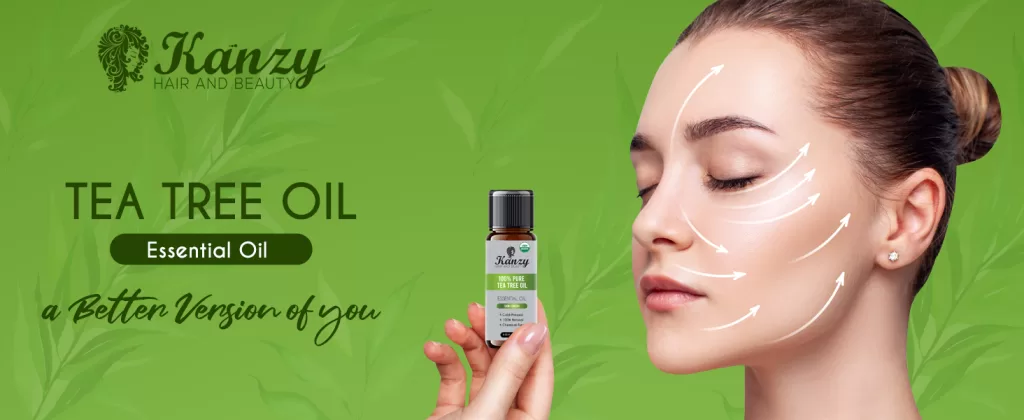
The Art of Personalizing Your Skincare: A Tailored Approach to Radiance
Beauty, my dear reader, is not a one-size-fits-all affair. Just as no two roses bloom in quite the same way, so too does each complexion require a bespoke touch—a regimen as unique as the woman who wears it. The secret to truly luminous skin lies not in the blind adherence to fleeting trends but in the careful customization of one’s skincare ritual. Let us embark upon this most essential journey: the art of tailoring a skincare routine suited to your skin’s every whim and whisper.
The Foundation: Know Thy Skin
Before we may nourish, we must first understand. Your skin is not a mystery, nor an adversary—it is a living canvas, ever-changing, ever-speaking. To craft the perfect routine, begin with a simple inquiry:
- Does your skin glow with an untamed brilliance? (Oily)
- Does it thirst for moisture, whispering of tightness and flaking? (Dry)
- Does it know no extremes, resting in gentle equilibrium? (Normal)
- Does it seem fickle, at times parched, at times gleaming? (Combination)
- Does it flush, sting, or rebel at the mere suggestion of fragrance or harsh elements? (Sensitive)
Observe, take note, and let your skin’s nature be your guiding light.
The Second Layer: Addressing Your Unique Concerns
A flawless complexion is not merely a matter of type but of temperament—what concerns does your skin whisper to you?
- Does it call for clarity? (Acne-prone, in need of salicylic acid and purifying botanicals.)
- Does it blush too easily? (Sensitive, yearning for the calming embrace of chamomile and aloe vera.)
- Does time’s gentle touch begin to linger upon it? (Mature, requiring the firming grace of peptides and retinoids.)
- Does it seek balance from stubborn dark spots? (Hyperpigmented, craving the brightening kiss of vitamin C and niacinamide.)
To tend to one’s skin is to listen, to soothe, to remedy with care.
The Apothecary of Beauty: Selecting the Right Elixirs
Once we know our skin’s voice, we must answer it—not with excess, but with precision. Choose wisely, for the right potion can transform, while the wrong may disrupt.
- For Oily Skin: Seek the clarifying embrace of salicylic acid, niacinamide, and tea tree oil—each a guardian against excess shine.
- For Dry Skin: Envelop yourself in the lush hydration of hyaluronic acid, ceramides, and squalane—ingredients that quench without suffocation.
- For Sensitive Skin: A whisper-soft touch is required—fragrance-free, alcohol-free, infused with chamomile, oat, and centella asiatica.
- For Aging Concerns: Bid fine lines a patient farewell with retinoids, peptides, and the firming power of collagen-enhancing actives.
More is not always better, but the right choice is everything.
The Ritual of Refinement: Testing and Adapting
No masterpiece is painted in haste. Introduce each new treasure one at a time, for the skin, much like the heart, must grow accustomed to change. Should irritation arise, do not despair—adjust, refine, and embrace patience, for beauty is cultivated, never forced.
- Begin simply: a cleanser, a moisturizer, and a sunscreen as your unwavering trinity.
- Introduce treatments with care, spacing them out to allow the skin to welcome them fully.
- If irritation occurs, adjust frequency, application, or formula—a gentle correction, never an abandonment.

The Evolution of Beauty: Adapting to Time and Season
Skincare, like life, is ever-changing. What nourishes in winter may weigh heavily in summer; what soothes in youth may not suffice in maturity. Revisit your ritual seasonally, refining where needed.
- Winter whispers for richer creams, protecting against the cruel, dry air.
- Summer sighs for weightless hydration, urging light serums over thick balms.
- With age, the skin asks for deeper care, a slow, graceful layering of firming and repairing elements.
Do not cling to old habits; instead, let your skin’s needs dictate your choices.
The Harmonious Blend: No Allegiance but to Your Skin
Beauty has no loyalty to a single brand—why should you? Let your vanity hold treasures from many houses, for it is the combination, not the label, that creates true perfection. The finest serum from one, the most delicate cleanser from another—this is the secret to bespoke skincare.
Final Thought: The Beauty of a Personalized Ritual
Skincare is not merely an obligation, but a daily act of self-devotion. To create a routine crafted for your skin’s unique melody is to indulge in a most rewarding luxury—the kind that radiates from within. Listen well, choose wisely, and watch your skin transform beneath your tender care.
For in the end, true beauty is not dictated by trends, but by the intimate understanding of one’s own needs.
Common Skin Concerns and Conditions: Causes and Treatments
When it comes to skin, many people face a variety of concerns and conditions at different stages of life. Let’s explore these common issues and effective ways to address them.
Acne
Acne is a prevalent issue, affecting people of all ages. It’s typically caused by clogged pores, excess oil production, hormonal changes, bacteria, and sometimes genetics.
Treatment Options:
- Active Ingredients: Salicylic acid is particularly effective for penetrating pores and reducing blockages, while clay masks can draw out impurities.
- Professional Help: For more severe cases, professional facial treatments, including deep cleansing and extraction sessions, can be beneficial.
Redness
Red skin can often be mistaken for acne. Conditions like rosacea cause inflammation and redness, often due to genetic factors, but can be aggravated by triggers like extreme heat, alcohol, or sun exposure.
Treatment Options:
- Gentle Skincare: Opt for soothing products with ingredients like chamomile and calendula to calm the skin. Avoid products containing harsh chemicals.
Large Pores
Pores can appear enlarged due to excess oil, dead skin buildup, and loss of skin elasticity, often linked to oily or combination skin types.
Treatment Options:
- Exfoliation: Regular cleansing and gentle exfoliation can help reduce pore size by removing excess oil and debris.
- Masks: Clay and charcoal masks can gently tighten pores and improve skin texture.
Dehydration
Dehydrated skin lacks sufficient water, leading to dryness, dullness, and fine lines. This can result from environmental factors, diet, or lifestyle choices.
Treatment Options:
- Hyaluronic Acid: Incorporate products with hyaluronic acid into your routine. This powerful ingredient helps retain moisture, keeping skin hydrated and plump.
Signs of Aging
Aging skin often exhibits fine lines, wrinkles, and sagging due to decreased collagen and elastin production and prolonged exposure to free radicals.
Treatment Options:
- Antioxidants and Retinol: Use antioxidant-rich serums and retinol-based products to combat oxidative stress and improve skin elasticity.
- Hydration: Ensure skin stays moisturized, as drier aging skin can benefit from intensive hydration routines.
Lack of Firmness
As we age, skin loses its firmness due to diminished muscle tone and reduced elasticity, often leading to sagging.
Treatment Options:
- Firming Agents: Incorporate skincare with natural firming agents like peptides and bamboo.
- Facial Massage: Regular facial massages can help tone muscles and improve skin resilience.
Hyperpigmentation
Characterized by dark spots and uneven skin tone, hyperpigmentation arises from increased melanin production, often triggered by sun exposure, stress, or hormonal changes.
Treatment Options:
- Brightening Ingredients: Look for products containing ingredients like licorice root and arbutin to even out skin tone.
- Consistency: Maintain a consistent skincare routine to gradually lessen hyperpigmentation.
Sun Damage
Exposure to UV rays can cause immediate dehydration and long-term issues like redness and blotchiness.
Treatment Options:
- Sun Protection: Apply SPF products daily to shield skin from harmful rays.
- Post-Sun Care: Use hydrating balms and lotions to replenish moisture after sun exposure.
Dullness
Dull skin lacks a healthy glow, often due to environmental or lifestyle factors like poor diet or lack of exercise.
Treatment Options:
- Nutrient-Rich Diet: Eating foods rich in antioxidants can enhance skin glow.
- Exfoliation: Regular exfoliation removes dead skin cells, revealing a brighter complexion underneath.
Incorporating specific treatments for each concern into your skincare routine can lead to noticeable improvements, helping you achieve healthier and more radiant skin.
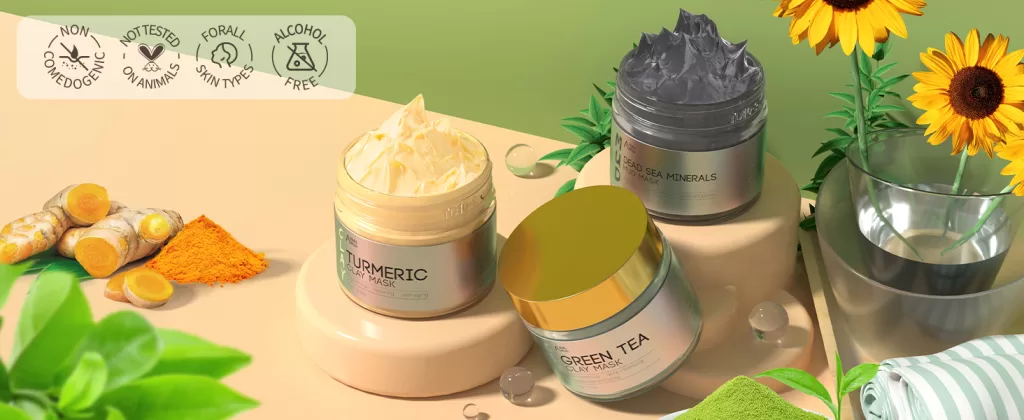
How Can Acne Be Managed and Treated Effectively?
Dealing with acne isn’t just a teenage struggle—it can affect anyone at any point in their lives. Understanding the root causes and exploring effective treatments can help manage this common skin concern.
Understanding Acne Causes
Acne results from multiple factors like clogged pores, excess oil, hormonal changes, bacteria, and even genetics. These elements combine to trigger breakouts that can affect any skin type.
Key Ingredients for Treatment
To tackle acne effectively, incorporating specific ingredients into your skincare regimen can be highly beneficial:
- Salicylic Acid: Known for its deep pore-cleansing abilities, salicylic acid is a beta hydroxy acid that helps dissolve impurities and combat bacteria responsible for acne.
- Clay: Its unique ability to attract and remove impurities makes clay an excellent choice for detoxifying skin and reducing surface oil.
Professional Treatments
For those with persistent or severe acne, professional spa treatments can offer substantial relief:
- Acne Facials: These treatments include deep cleansing and exfoliation, using peels with concentrated active ingredients to clear skin.
- Extractions: A licensed esthetician can perform extractions safely, removing blackheads and whiteheads to prevent further breakouts.
By understanding your skin’s needs and applying targeted treatments, managing acne can become a straightforward part of your skincare routine.
Why is Eye Care Necessary, and How Should It Be Applied?
The Importance of Eye Care
The skin around the eyes is exceptionally delicate, being up to seven times thinner than the skin on the rest of your face. This fragile nature makes it prone to issues such as fine lines, wrinkles, dark circles, and puffiness. Regular attention to this area not only helps maintain its health and elasticity but also enhances overall facial appearance.
Benefits of Regular Eye Cream Use
- Preserves Elasticity: Helps maintain the natural elastic quality of the skin, preventing premature sagging.
- Reduces Signs of Aging: Diminishes the appearance of fine lines and wrinkles, keeping your skin looking youthful.
- Combats Fatigue: Lightens dark circles, making you appear more awake and refreshed.
- Decreases Puffiness: Soothes and reduces the look of under-eye bags.
Applying Eye Cream Correctly
- Frequency: Apply twice a day—once in the morning and once at night.
- Method:
- Gentle Touch: Use your ring finger, as it exerts less pressure.
- Dotting Technique: Dab small dots from the inner to outer corners of the under-eye area.
- Smooth and Tap: Gently smooth and tap the cream, allowing it to fully absorb without pulling the skin.
By incorporating these eye care practices into your routine, you’ll help preserve the delicate skin around your eyes and contribute to a more youthful, vibrant look.
The Benefits of Using Toners, Essences, and Facial Mists
Discovering the right skincare routine can make a world of difference in how your skin looks and feels. Amongst the essential steps, incorporating a toner, essence, or facial mist can elevate your skincare game. But what exactly are the benefits?
1. Completes the Cleansing Process
- Deep Cleansing: After washing your face, a toner or essence works to clear any lingering impurities and any residue left behind.
- Balancing Act: These products help restore your skin’s natural pH balance that might be disrupted by cleansing.
2. Infuses Vital Nutrients
- Nutrient Delivery: Modern toners and essences are formulated with a range of beneficial vitamins and minerals that enhance your skin’s overall health.
- Skin Fortification: Ingredients like antioxidants, peptides, and botanicals fortify the complexion, providing essential nourishment that your skin craves.
3. Prepares and Primes Your Skin
- Enhanced Absorption: By prepping your skin, these products ensure that subsequent skincare items, like serums and moisturizers, penetrate more effectively.
- Hydration Boost: Facial mists, in particular, offer a quick hydration boost throughout the day, refreshing your skin instantly.
4. Soothes and Calms
- Gentle Care: Unlike the harsh alcohol-based formulas of the past, today’s toners and mists help soothe irritated skin, reducing redness and inflammation.
By aligning your skincare routine with these products, they function much like a conditioner to a shampoo, complementing and enhancing each step for optimal results. Whether you’re looking to calm, hydrate, or balance your skin, these products provide multi-faceted benefits that keep your skin healthy and radiant.

Why Are Customized Professional Spa Treatments Beneficial for Skin Health?
Customized professional spa treatments offer significant benefits for your skin health, going beyond what you can achieve with at-home care alone. Here’s why they’re essential:
- Targeted Approach: At a spa, treatments are tailored specifically to your skin type and concerns. This means you receive precisely what your skin needs, whether easing acne, reducing wrinkles, or boosting hydration.
- Expert Techniques: Licensed estheticians utilize advanced techniques and professional-grade products that aren’t accessible at home. Their expertise unlocks more effective results by combining skill with high-quality ingredients.
- Enhanced Results: Spas use specialized equipment and methods that enhance the absorption and efficacy of treatments. For example, techniques like microdermabrasion or LED light therapy can rejuvenate your skin at a deeper level than typical household products.
- Holistic Care: Alongside the treatment itself, estheticians provide valuable insights into maintaining skin health. They’ll guide you on integrating the effects of spa visits into your daily, nightly, and weekly skincare routines for lasting results.
By integrating expert knowledge with top-tier products, customized professional spa treatments ensure your skin not only looks good but also feels radiant and healthy.
FAQs: Essential skincare products
1. May I skip moisturizer if my skin is oily?
No, never! The right moisturizer ensures your skin remains balanced and poised, never parched nor overwhelmed. It’s one of the three essential skincare products you need.
2. Must I wear sunscreen even on cloudy days?
Yes, always! The sun, though unseen, whispers through the clouds and lingers upon your skin. Sunscreen is a non-negotiable among essential skincare products.
3. Will this routine suffice for morning and night?
Indeed, with but one exception—your sunscreen is for daylight alone, while your moisturizer must cradle your skin through the night. These essential skincare products are versatile and effective.
4.They are embellishments, luxuries—delightful, but not essential. If your skin calls for them, answer, but never at the expense of these three essential skincare products. Face masks, while indulgent, serve a purpose beyond mere pampering. They are packed with concentrated vitamins and nutrient-rich ingredients that nourish the skin, making it appear healthy and resilient.
Key Benefits of Face Masks:
- Hydration and Firming: Quench your skin’s thirst and enhance its elasticity.
- Targeted Treatment: Address stubborn issues like acne, large pores, and dark spots effectively.
Incorporating a face mask into your routine can be a strategic move, offering targeted care where your skin needs it most. Remember, though, while they can elevate your skincare game, they should complement—not overshadow—your foundational skincare essentials.
5. Is this routine for all ages?
Yes, for beauty has no age limit—only the wisdom to care for it well with essential skincare products.

How Can Large Pores Be Minimized?
Large pores are a prevalent skin concern for many, often linked to the natural oil production and elasticity levels of your skin. Here’s how you can effectively minimize them:
- Cleanse Regularly: Start with a gentle, daily cleansing routine to prevent the buildup of oils and dead skin cells. This helps keep your pores from expanding due to blockages.
- Incorporate Exfoliation: Aim to exfoliate your skin 2-3 times a week. This process removes dead skin cells and smooths your complexion. Opt for products containing salicylic acid or lactic acid for a more targeted approach.
- Use Clay or Charcoal Masks: Utilize these masks once or twice weekly to draw out impurities from deep within your pores. They provide a mild astringent effect that can help tighten the appearance of your pores.
- Balance Oil Production: Choose non-comedogenic moisturizers and serums that regulate oil without clogging pores. Ingredients like niacinamide can help control excess sebum.
- Don’t Forget Sun Protection: UV exposure can further stretch pores by breaking down collagen. Use a broad-spectrum sunscreen with at least SPF 30 daily to keep your skin protected.
- Stay Hydrated: Keeping the skin moisturized internally and externally can improve its overall texture and elasticity, which plays a role in maintaining pore size.
Through consistent skincare habits and the right products, you can significantly reduce the appearance of large pores and achieve a smoother, more refined complexion.
Understanding and Reducing Redness: A Comprehensive Guide
Redness, particularly on areas like the nose, forehead, cheekbones, or chin, can often be mistaken for acne. It is frequently due to a condition called rosacea. This skin problem arises from inflamed capillaries just beneath the skin’s surface, leading to a red, blotchy, or even bumpy appearance.
Causes of Redness
While rosacea is primarily genetic, various external factors can exacerbate the condition:
- Extreme Temperatures: Both hot and cold weather can irritate the skin.
- Alcohol Consumption: Drinking alcohol can cause facial flushing and worsen redness.
- Sun Exposure: UV rays can inflame and further irritate sensitive skin.
Recognizing these triggers can help in managing and reducing redness.
Ways to Reduce Redness
To alleviate redness associated with rosacea, consider implementing a gentle skincare routine that caters to sensitive skin. Here’s how:
- Identify and Avoid Triggers: Be mindful of factors like weather changes, spicy foods, and stress that might aggravate redness.
- Opt for Gentle Skincare Products: Choose formulations that exclude harsh chemicals such as parabens, petrolatum, mineral oils, propylene glycol, and sodium lauryl sulfate.
- Incorporate Soothing Ingredients:
- Chamomile: Known for its calming properties.
- Calendula: Helps heal and reduce skin irritation.
- Aloe Vera: Offers cooling relief and hydration.
- Sun Protection: Use a broad-spectrum sunscreen daily to shield your skin from harmful UV radiation.
- Stay Hydrated and Maintain a Healthy Diet: Drinking plenty of water and consuming anti-inflammatory foods can support skin health from within.
By understanding the causes and making thoughtful adjustments to your skincare routine, you can effectively manage and reduce redness for a more even and radiant complexion.

How to Extend Body Care Beyond the Face in Your Skincare Routine
Consider Whole-Body Care. While facial skincare often takes the spotlight, extending your routine to include the entire body is essential for maintaining overall skin health. Various areas of your body can experience dryness, irritation, or other concerns depending on your skin type.
Incorporate Body-Specific Products. Just as you use specialized products for your face, choose nutrient-rich lotions and creams for your body. Ingredients like shea butter, vitamin E, and hyaluronic acid can provide hydration and nourishment to keep your skin looking and feeling its best from head to toe.
Establish a Consistent Routine. Aim to apply body care products daily or as needed, especially after showering when your skin can absorb them more effectively. This regular product use helps maintain the skin’s barrier, giving it a smooth and youthful appearance.
Target Specific Concerns. Are you dealing with areas of rough or dry skin? Consider using exfoliating scrubs or retinol-infused creams to improve texture and promote cell renewal. Don’t forget to protect exposed areas with sunscreen, extending the same level of care and attention as you do to your face.
By expanding your skincare routine beyond just the face, you ensure every part of your skin receives the attention it deserves, maintaining its health and vibrancy.
Why Are Customized Professional Spa Treatments Beneficial for Skin Health?
Customized professional spa treatments offer significant benefits for your skin health, going beyond what you can achieve with at-home care alone. Here’s why they’re essential:
- Targeted Approach: At a spa, treatments are tailored specifically to your skin type and concerns. This means you receive precisely what your skin needs, whether easing acne, reducing wrinkles, or boosting hydration.
- Expert Techniques: Licensed estheticians utilize advanced techniques and professional-grade products that aren’t accessible at home. Their expertise unlocks more effective results by combining skill with high-quality ingredients.
- Enhanced Results: Spas use specialized equipment and methods that enhance the absorption and efficacy of treatments. For example, techniques like microdermabrasion or LED light therapy can rejuvenate your skin at a deeper level than typical household products.
- Holistic Care: Alongside the treatment itself, estheticians provide valuable insights into maintaining skin health. They’ll guide you on integrating the effects of spa visits into your daily, nightly, and weekly skincare routines for lasting results.
By integrating expert knowledge with top-tier products, customized professional spa treatments ensure your skin not only looks good but also feels radiant and healthy.
By focusing on these three essential skincare products, you can achieve radiant, healthy skin without the clutter of unnecessary products. Simplicity, after all, is the ultimate sophistication.
Related Content:

The Hidden Dangers of DIY Skincare: What You Need to Know

Explore more articles like this @ Where And How Resources
If you found this article helpful, don’t forget to share it with your friends and followers!

